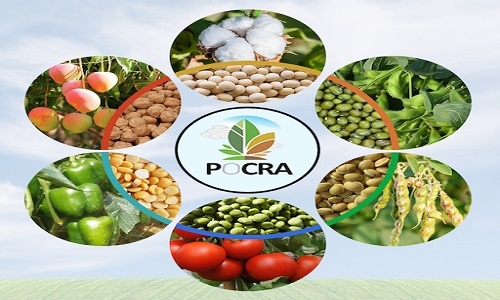Nagpur, five other districts covered under PoCRA 2.0
| Date :03-Jul-2023 |

Staff Reporter
With the decision of State Cabinet regarding Nanaji Deshmukh Krishi Sanjeevani Prakalp, also known as Project on Climate Resilient Agriculture (PoCRA), entire Vidarbha region will be covered under the project. Previously, 2,054 villages in six districts of Vidarbha region were covered in Phase-I of PoCRA. Now, the Phase-II will cover remaining five districts including Nagpur. For the ambitious Phase-II, expenditure is estimated to be Rs 6,000 crore. In Phase-I of the project, total 2,054 are from six districts of Vidarbha namely Amravati, Akola, Buldana, Washim, Yavatmal, and Wardha. All these six districts were included in the relief package announced by Prime Minister in 2006 for districts affected by farmers’ suicides. Now, in Phase-II, remaining five districts of Vidarbha region have been included. These include Nagpur, Bhandara, Gondia, Chandrapur, and Gadchiroli. According to officials, the villages are yet to be finalised for Phase-II.
A committee headed by Additional Chief Secretary of Agriculture Department will select the villages to be covered in Phase-II of PoCRA. The committee comprises of Vice-Chancellors of Dr Panjabrao Deshmukh Krishi Vidyapeeth, Akola; Vasantrao Naik Marathwada Krishi Vidyapeeth, Parbhani; and Mahatma Phule Krishi Vidyapeeth, Rahuri; Commissioner (Agriculture); and Commissioner, Groundwater Survey and Development Agency. Project Director, Nanaji Deshmukh Krishi Sanjeevani Prakalp, is the Member Secretary of the committee. The 5,220 villages included in Phase-I of the project included 932 from saline belt (spread over Akola, Jalgaon, Buldana, and Amravati districts), and remaining from drought-prone areas. The region-wise break-up of villages in Phase-I was as follows: Vidarbha and Marathwada -- 4,682 including 932 in saline belt, Jalgaon district -- 460, Malegaon tehsil in Nashik district -- 142. The district-wise break-up of Vidarbha villages included in Phase-I of PoCRA was as follows: Amravati -- 532, Akola -- 498, Buldana -- 441, Yavatmal -- 309, Washim -- 149, and Wardha -- 125. The Phase-I was to be implemented between 2018-19 and 2023-24. Of an estimated expenditure of Rs 4,000 crore, as much as 70 per cent (Rs 2,800 crore) was to come from World Bank, and State Government was to contribute remaining Rs 1,200 crore. Training programmes were conducted for officials concerned at Vasantrao Naik Agricultural Extension Management Training Institute (VANAMATI) at Nagpur.
The original estimated cost of the PoCRA 1.0 was Rs 4,000 crore. The revised estimate is Rs 5,469 crore.
Due to fluctuation in dollar-rupee parity in International market, the estimated cost rose by Rs 690 crore. Of this increase, the World Bank will be providing Rs 483 crore. For completion of the ongoing works, State will be contributing Rs 779 crore. Thus, total Rs 1,461 crore will be made available for the works under Phase-I of the project.
Maharashtra Government had launched PoCRA to make focussed efforts to help farmers in long run as far as resilience to climate change was concerned. As many as 5,142 villages of the State including 2,054 villages from Vidarbha were chosen for implementation of the project. The idea was to equip farmers to face the vagaraies of nature especially including inequitable distribution of rainfall, longer dry spells in monsoon, unseasonal rains, hailstorms and such unexpected events. The project was aimed at equipping farmers to shield them from the ill-effects of scarcity or drought situations affecting the rate of agricultural growth, and causing distress among farmers leading to their suicides.